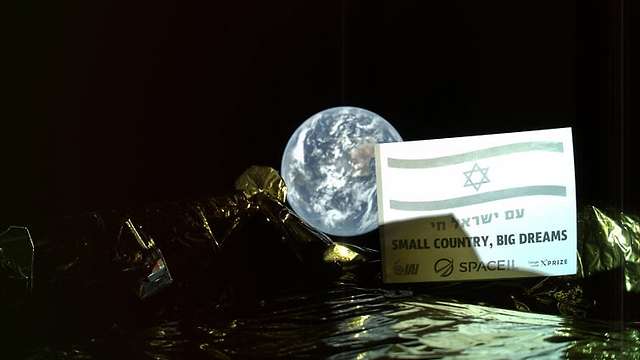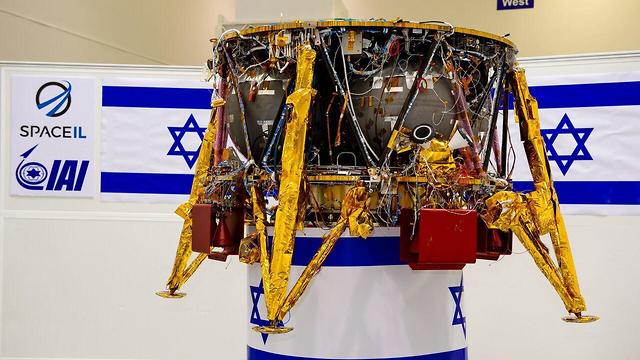
The Israeli flag with Planet Earth in the background and Israel at a distance of approximately 131,000 km are just two of the pictures taken by the Israeli spacecraft Genesis, on its journey to the moon. The spacecraft, developed by SpaceIL and Israeli Aircraft Industries, also filmed a short video.
The spacecraft is orbiting the Earth in an elliptical path and will travel a total distance of approximately 6 million kilometers, although the distance from Earth to the Moon is on average only 384,000 kilometers (it varies between 356,000 to 406,000 kilometers due to the moon’s elliptical orbit around Earth).
The landing is expected to take place on April 11; it will last 20 minutes and will be performed autonomously using navigation and control software developed by SpaceIL engineers and IAI.
In order to land, the spacecraft must slow down the horizontal speed in proportion to the ground and then stop its horizontal speed relative to the landing site and then dramatically slow its vertical descent. The spacecraft makes use of different sensors to measure its position and height in relation to the moon's surface. The ground crew will not be able to intervene during the landing process.
In fact, Genesis’ orbit is longer than any other journey previously made to the moon because the craft is taking advantage of the Earth's gravity to accelerate the spacecraft faster and further, saving a fair amount of fuel.
When the spacecraft reaches the periphery of the Earth’s orbit, it will start its engines and slow its speed in order to allow the moon's gravity to capture the spacecraft and it will begin its orbit around the moon until it is close enough to land. This phase is scheduled for Thursday April 4th.


















